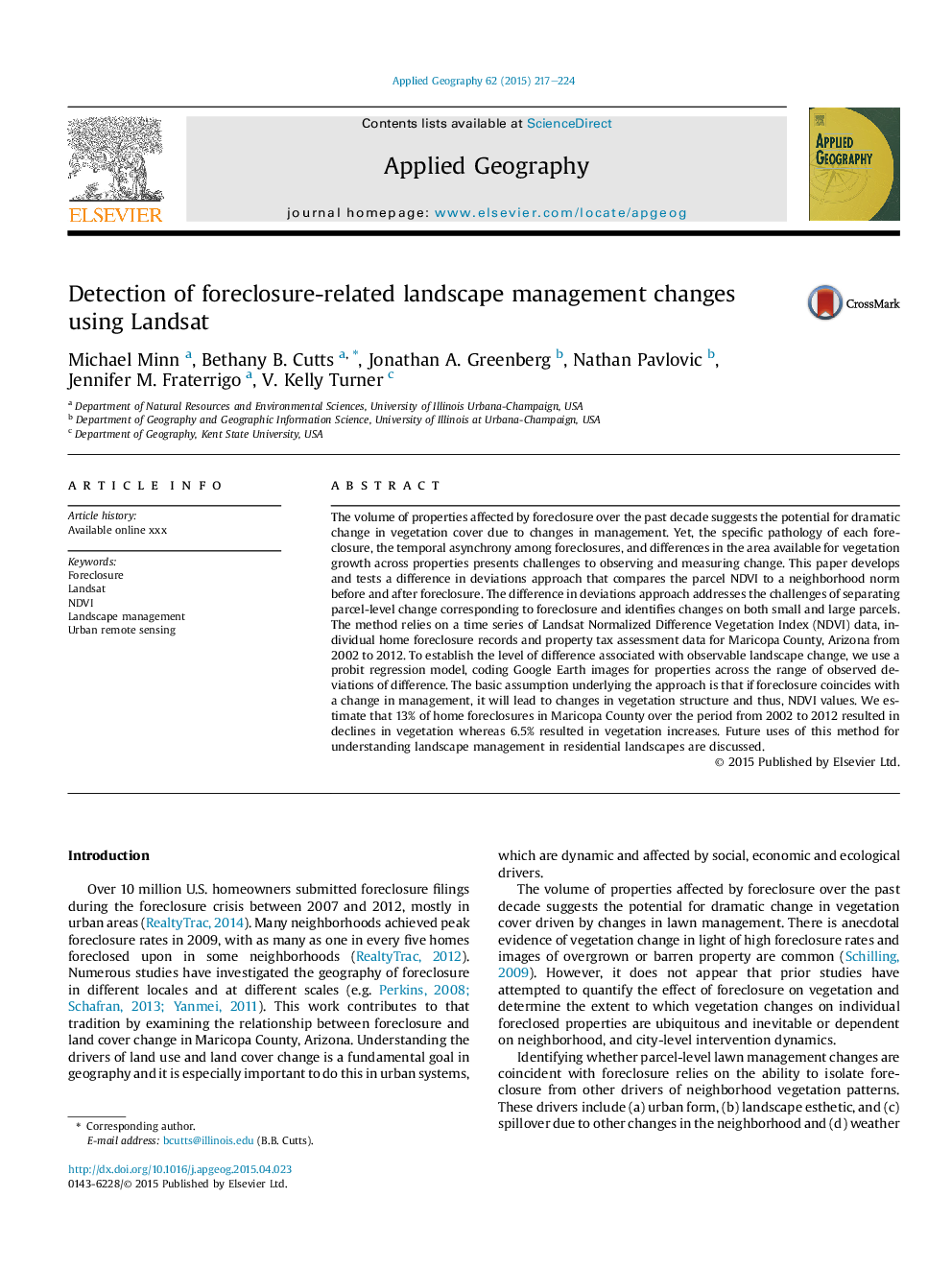| Article ID | Journal | Published Year | Pages | File Type |
|---|---|---|---|---|
| 6538509 | Applied Geography | 2015 | 8 Pages |
Abstract
The volume of properties affected by foreclosure over the past decade suggests the potential for dramatic change in vegetation cover due to changes in management. Yet, the specific pathology of each foreclosure, the temporal asynchrony among foreclosures, and differences in the area available for vegetation growth across properties presents challenges to observing and measuring change. This paper develops and tests a difference in deviations approach that compares the parcel NDVI to a neighborhood norm before and after foreclosure. The difference in deviations approach addresses the challenges of separating parcel-level change corresponding to foreclosure and identifies changes on both small and large parcels. The method relies on a time series of Landsat Normalized Difference Vegetation Index (NDVI) data, individual home foreclosure records and property tax assessment data for Maricopa County, Arizona from 2002 to 2012. To establish the level of difference associated with observable landscape change, we use a probit regression model, coding Google Earth images for properties across the range of observed deviations of difference. The basic assumption underlying the approach is that if foreclosure coincides with a change in management, it will lead to changes in vegetation structure and thus, NDVI values. We estimate that 13% of home foreclosures in Maricopa County over the period from 2002 to 2012 resulted in declines in vegetation whereas 6.5% resulted in vegetation increases. Future uses of this method for understanding landscape management in residential landscapes are discussed.
Related Topics
Life Sciences
Agricultural and Biological Sciences
Forestry
Authors
Michael Minn, Bethany B. Cutts, Jonathan A. Greenberg, Nathan Pavlovic, Jennifer M. Fraterrigo, V. Kelly Turner,
